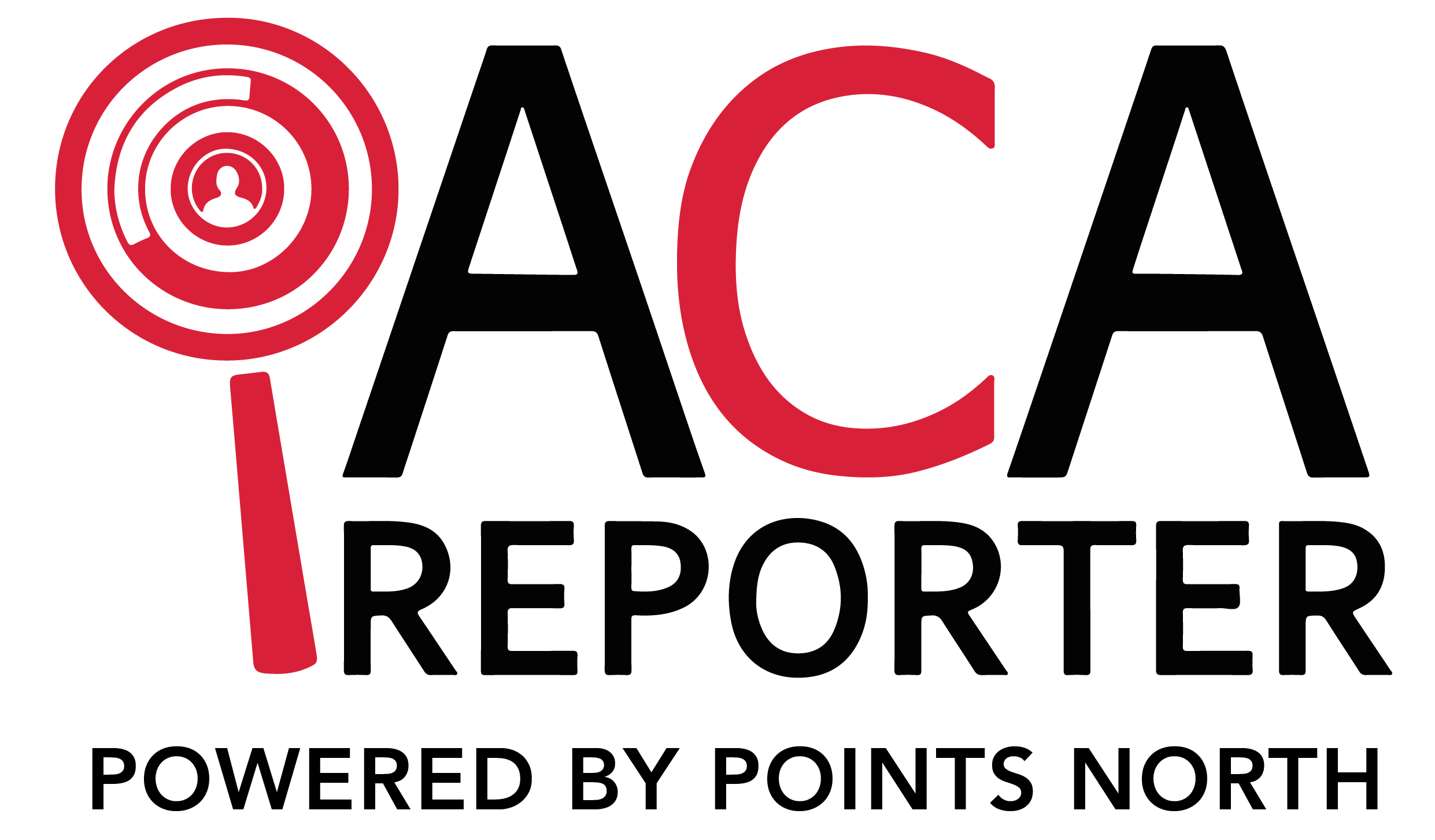The Affordable Care Act (ACA) established new reporting requirements for applicable large employers (ALEs) to ensure they are providing quality, affordable health coverage options for employees. While well-intentioned, these new reporting rules have created additional administrative complexities for employers to navigate.
Each year, ALEs must track detailed data on the healthcare coverage offered to full-time employees. This includes information on who was offered coverage, and who enrolled in the plan or waived the offer. ALEs must also provide information on the lowest cost of coverage that meets the ACA requirements.
ALEs must produce 1094 and 1095 forms each year that contain the information required by the IRS. The purpose of these ACA forms is to demonstrate that employers are making an offer of coverage to all employees who require an offer and that the offer meets the ACA requirements for minimal essential coverage, minimum value, and affordability.
With numerous forms, codes, and deadlines to juggle, ACA reporting can quickly become a headache for HR departments and employers. Even small mistakes on forms can lead to penalties or rejected filings. This guide will walk you through the major reporting forms, who needs to file them, and what information must be included. Having a handle on what is required can help employers avoid missteps when filing ACA reports each year.
What ACA Forms Do Employers Need to File?
The ACA reporting forms are Forms 1094 and 1095. The 1094 acts as a transmittal document that accompanies the 1095 forms, providing a summary of the information across the group of returns.There are two versions of the 1094 - Form 1094-B and Form 1094-C. The form each employer needs to use is dependent on their status as an ALE. Non-ALE employers, who offer a self-insured plan, are able to use the B Series forms. Employers who are designated as an ALE, even as a part of an aggregated reporting group, will need to use the C Series forms.
The 1095 is used to report detailed employee and offer of coverage data required by the IRS. The 1095 forms report information on who was covered by the plan, the 1095-C form also contains monthly information about the offer of coverage, lowest available cost to the employee, and Safe Harbor statuses.
Applicable Large Employers will need to file Forms 1094-C and 1095-C to report on coverage offered to full-time employees.
In this guide, we will break down what each 1095 form is specifically used for, when it must be filed, and what information must be included. But first, let's look at the criteria for determining which employers need to file ACA reporting forms.
Who Files Forms 1094 and 1095?
In general, Applicable Large Employers (ALEs) must file forms 1094 and 1095. An Applicable Large Employer is defined as an employer with 50 or more full-time employees. The FTE count for a company is calculated each month by adding all the hours worked by part-time, variable hour, and seasonal employees, up to a max of 120 hours per employee, and dividing the sum by 120. This value is then added to the count of employees who are designated as full-time.
However, there are some exceptions and nuances to these rules (though, these are subject to change):
- New employers, who start with an FTE count of 50 or more, may need to file in their first year of business.
- An existing employer, who was not an ALE, but grows to become an ALE will need to file their ACA information with the IRS the next year.
- Additionally, when an employer’s monthly FTE count averages 50 or more due to growth, the IRS requires that an offer of coverage is made to all ACA full-time employees by April 1 of the following year.
- If an employer's workforce grows to over 50 full-time employees, they do not need to file that first year but must file the following year.
- Employers, even non-ALE employers, with self-insured health plans must file with the IRS. Non-ALEs will use form 1095-B to report coverage for non-employees such as spouses and dependents.
So while the majority of filers are Applicable Large Employers, it's important for companies to understand if they meet the criteria and which specific forms apply to their situation. Reaching out to a knowledgeable advisor can help clarify.
What are 1094 and 1095 Reporting Forms?
Now that we’ve covered who is required to file 1094 and 1095 forms, let’s explore what these forms are used for.
The 1094 forms serve as transmittal documents for the 1095 series. The 1094 provides summary information across all the 1095 returns being submitted, such as:
- Total number of forms filed
- Company identification
- Aggregated ALE group details
The 1095 forms contain the actual employee and coverage data that must be reported to the IRS. There are three different 1095 versions:
- Form 1095-A: Filed by the Health Insurance Marketplace to report exchange enrollment data
- Form 1095-B: Filed by insurance carriers and non-ALE employers who offer a self-insured plan, to report insured individual coverage
- Form 1095-C: Filed by Applicable Large Employers to report employee healthcare offers
Each 1095 form has specific codes to report detailed policy, offer, and coverage information for individuals. This data is used by the IRS to verify employers are meeting ACA requirements related to:
- Providing minimum essential coverage
- Coverage affordability
- Compliance with employer mandates
Accurately tracking and reporting data on the correct 1094/1095 forms applicable to your company is critical for avoiding penalties for non-compliance.
The IRS’s ACA Forms Explained
Form 1095-A
Form 1095-A is filed by the Health Insurance Marketplace to report information on enrollments in qualified health plans.
This form includes comprehensive information on an individual's enrollment such as:
- Monthly premium cost
- Advance payments of the premium tax credit
- Coverage start and end dates
- Household members covered
- Percentage of premium paid by policyholder vs. tax credits
Additional Key Details on Form 1095-A:
- Part 1 includes identification information on the primary taxpayer, spouses if a joint return, and dependents.
- Part 2 reports the monthly premium cost, advance payment of the premium tax credit, and monthly percentage paid by the policyholder vs tax credits. This is reported for each month the individual was enrolled.
- If there were any changes in enrollment during the year, Part 2 includes details on the start and end dates of each policy.
- Part 3 indicates individuals covered under the plan each month.
Providing this detailed information allows the IRS to verify eligibility and determine if individuals enrolled in Marketplace plans qualify for the premium tax credit.
Who Files: Health Insurance Marketplace
Form 1095-B
Form 1095-B is used by health insurance issuers, including non-ALE employers who offer self-insured coverage, and carriers to report detailed information on individuals enrolled in minimum essential coverage.
The comprehensive data includes:
- Primary subscriber information
- Social Security Numbers
- Policy number
- Monthly coverage details
- Covered individuals
Additional Key Details on Form 1095-B:
- Part 1 reports identification information on the primary insured individual and each covered dependent.
- Part 2 includes policy number, coverage start and end dates, and monthly indicator codes specifying who was covered each month.
- Part 3 is completed if the coverage provided was through a small business health insurance marketplace (SHOP exchange).
Reporting this information allows the IRS to verify individuals have the required health coverage.
Who Files: Health insurance issuers, including non-ALE employers who offer self-insured coverage, and carriers
Form 1095-C
Form 1095-C is a critical ACA reporting form filed by Applicable Large Employers (ALEs). It reports detailed information on healthcare coverage offered to full-time employees.
Comprehensive data on Form 1095-C includes:
- Employee and employer identification details
- Affordability Safe Harbor Codes
- Monthly information on coverage offered to each employee
- Monthly cost of lowest-cost self-only coverage offered
- All Covered Individuals for self-insured plans
Additional Key Details on Form 1095-C:
- Part 1 reports identification information on the primary insured individual and their employer
- Part 2 Includes information on the offer, cost, and safe harbor each month.
- Part 3 Includes information on the covered individuals
Who Files: Applicable Large Employers
Make Filing IRS Forms Painless
As we’ve seen, ACA reporting requires multiple complex IRS forms. Tracking information and accurately filing these forms can be challenging and time-consuming for employers.
Fortunately, solutions like ACA Reporter simplify the entire process. ACA Reporter is a complete ACA tracking and reporting software. With ACA Reporter, you can:
- Simplify the 1095-C form generation process
- Electronically file forms with the IRS
- Manage ACA compliance in one centralized system
ACA Reporter handles the heavy lifting of form calculations, tracking, and reporting so employers can ensure ACA compliance with less work.
Some key benefits of using ACA Reporter include:
- Simplified tracking - ACA Reporter makes it easy to track employee hours and coverage offers across multiple locations or entities. Their system accounts for complex employment situations.
- Error-proof reporting - The software checks for errors and flags issues for correction before filing forms with the IRS. This prevents rejections or penalties.
- Electronic filing - ACA Reporter can electronically file 1094 and 1095 forms with the IRS. There's no need to mail paper forms.
- ACA audit support - Detailed tracking and error-checking ensures you have accurate records if audited.
- Cloud-based access - You can access ACA Reporter and your data from anywhere through their secure online portal.
For employers struggling with ACA reporting, ACA Reporter is a game-changer. The intuitive software and expert support team handle the hard parts so you can ensure full compliance with less effort.
To learn more about how ACA Reporter can simplify your ACA reporting, visit our website.





